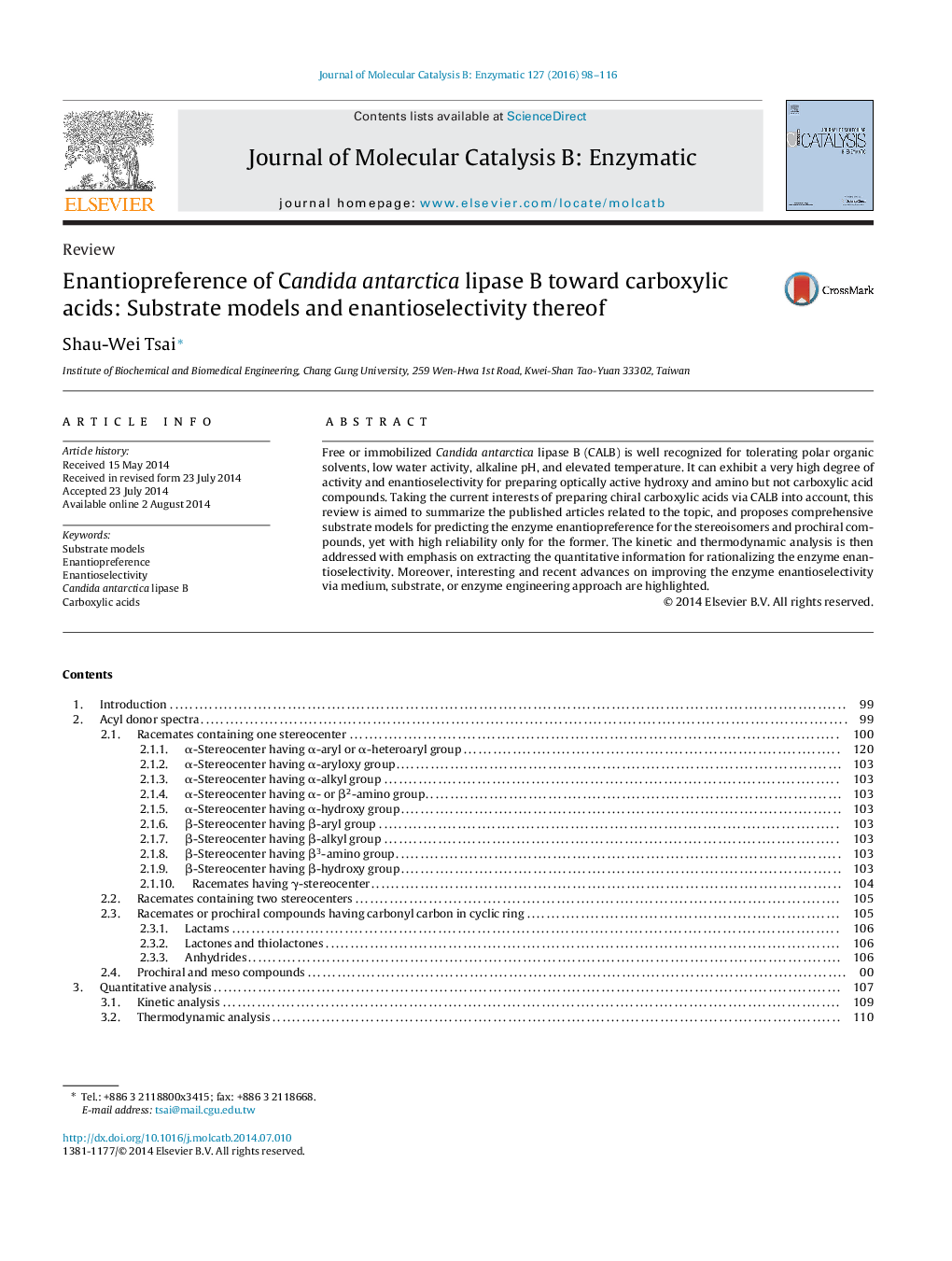| Article ID | Journal | Published Year | Pages | File Type |
|---|---|---|---|---|
| 69440 | Journal of Molecular Catalysis B: Enzymatic | 2016 | 19 Pages |
•All published articles related to the enantiopreference of Candida antarctica lipase B toward carboxylic acids were summarized and classified.•Comprehensive substrate models for different stereoisomers and prochiral compounds were proposed with high reliability for the former.•Kinetic and thermodynamic analysis for rationalizing quantitative data was demonstrated.•Recent and interesting advances on improving the enzyme enantioselectivity via medium, substrate, or enzyme engineering were addressed.
Free or immobilized Candida antarctica lipase B (CALB) is well recognized for tolerating polar organic solvents, low water activity, alkaline pH, and elevated temperature. It can exhibit a very high degree of activity and enantioselectivity for preparing optically active hydroxy and amino but not carboxylic acid compounds. Taking the current interests of preparing chiral carboxylic acids via CALB into account, this review is aimed to summarize the published articles related to the topic, and proposes comprehensive substrate models for predicting the enzyme enantiopreference for the stereoisomers and prochiral compounds, yet with high reliability only for the former. The kinetic and thermodynamic analysis is then addressed with emphasis on extracting the quantitative information for rationalizing the enzyme enantioselectivity. Moreover, interesting and recent advances on improving the enzyme enantioselectivity via medium, substrate, or enzyme engineering approach are highlighted.
Graphical abstractFigure optionsDownload full-size imageDownload as PowerPoint slide
